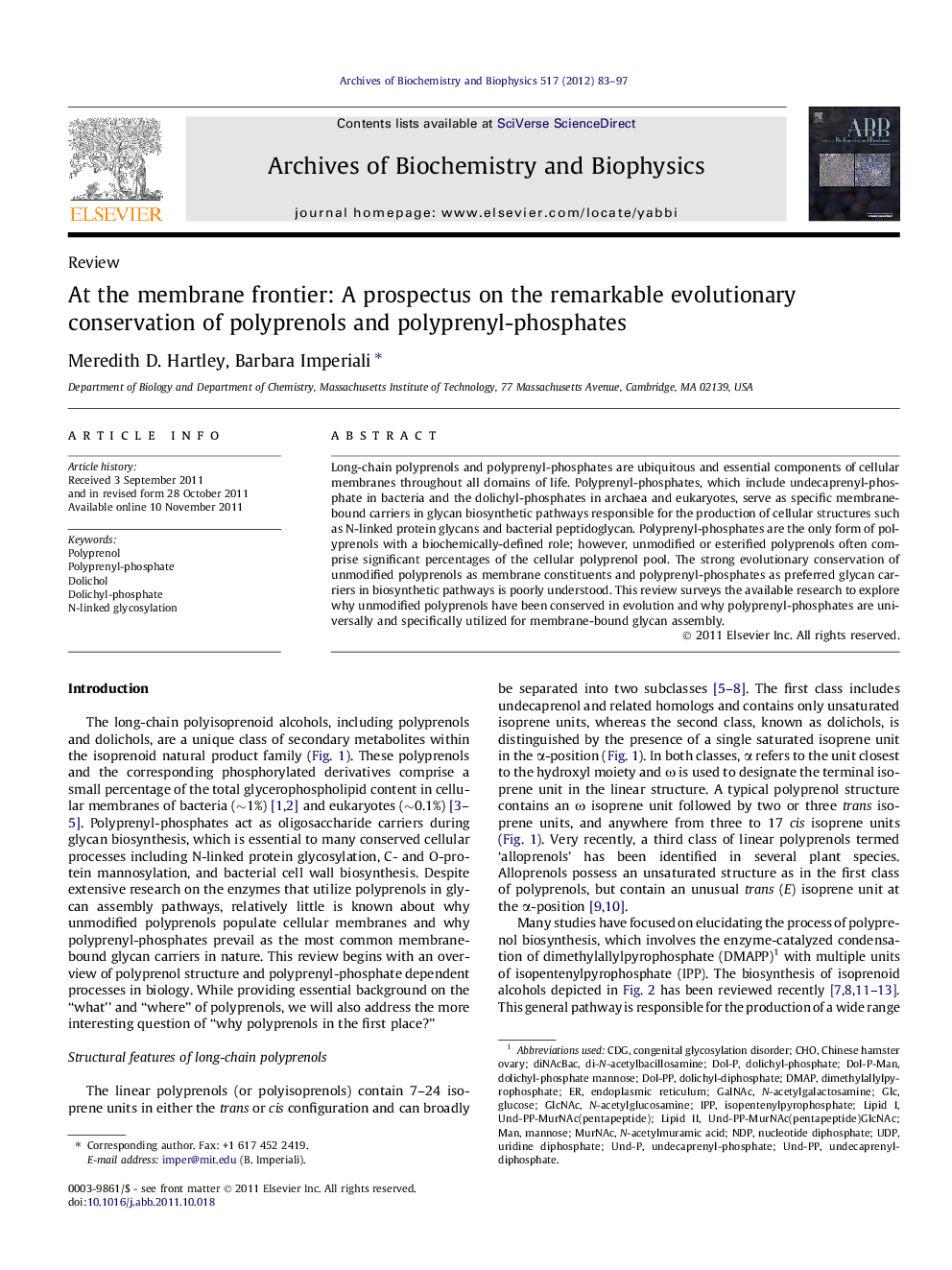| Article ID | Journal | Published Year | Pages | File Type |
|---|---|---|---|---|
| 1925615 | Archives of Biochemistry and Biophysics | 2012 | 15 Pages |
Long-chain polyprenols and polyprenyl-phosphates are ubiquitous and essential components of cellular membranes throughout all domains of life. Polyprenyl-phosphates, which include undecaprenyl-phosphate in bacteria and the dolichyl-phosphates in archaea and eukaryotes, serve as specific membrane-bound carriers in glycan biosynthetic pathways responsible for the production of cellular structures such as N-linked protein glycans and bacterial peptidoglycan. Polyprenyl-phosphates are the only form of polyprenols with a biochemically-defined role; however, unmodified or esterified polyprenols often comprise significant percentages of the cellular polyprenol pool. The strong evolutionary conservation of unmodified polyprenols as membrane constituents and polyprenyl-phosphates as preferred glycan carriers in biosynthetic pathways is poorly understood. This review surveys the available research to explore why unmodified polyprenols have been conserved in evolution and why polyprenyl-phosphates are universally and specifically utilized for membrane-bound glycan assembly.
Graphical abstractFigure optionsDownload full-size imageDownload high-quality image (178 K)Download as PowerPoint slideHighlights► Polyprenyl-phosphates serve as ubiquitous carriers for glycan assembly. ► Biophysical effects of polyprenol accumulation may play a role in aging and disease. ► Polyprenyl-phosphates are important regulatory molecules in glycoprotein biosynthesis. ► Polyprenyl-phosphates may play a role in glycan flipping and enzyme complex formation.
